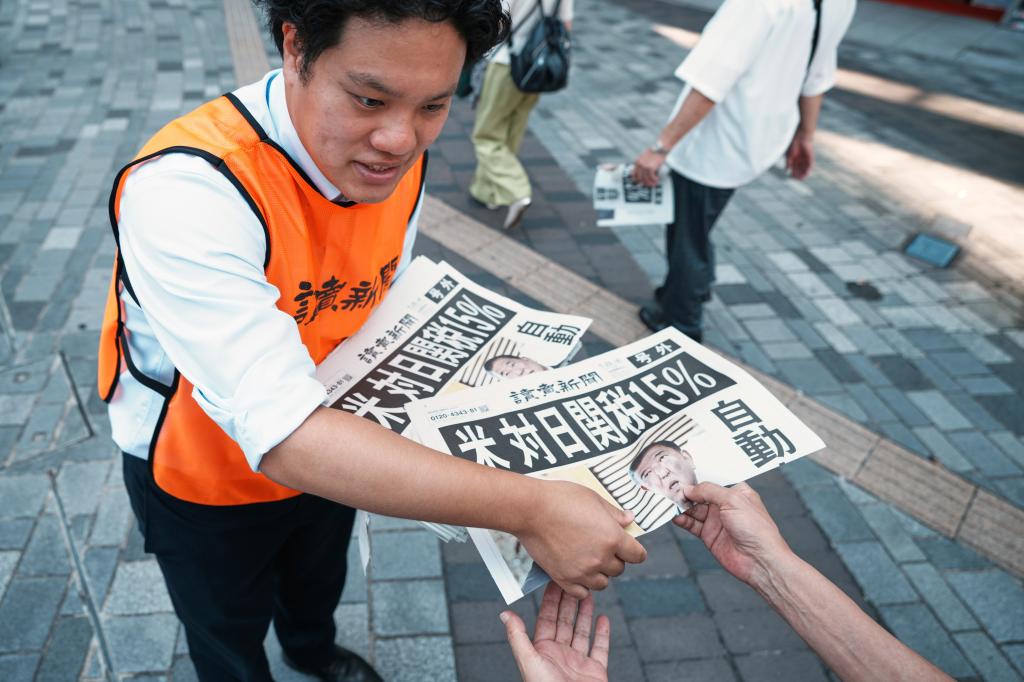The Trump administration has reached an important economic agreement with Japan. International trade and finance today are complicated, and therefore, agreements can be difficult to sum up briefly.
In this case, there is also significant background, somewhat different from our history with Europe, that bears in important ways on the specifics of the accord.
Japan has committed to provide $550 billion in new funding to the United States in the form of investment, loans and loan guarantees. President Donald Trump is justified in declaring that the agreement represents a major victory for his approach of negotiating concessions from other nations, especially major partners in Asia and Europe.
However, the agreement is also precisely in line with the long-term strategy of Japan to sidestep U.S. restrictions on direct imports by emphasizing investment in our country. This dates from the Reagan administration, years when trade and other frictions between Tokyo and Washington were at a peak.
Reagan officials pressed their counterparts in Japan to accept what were termed “voluntary export agreements,” meaning in fact a ceiling on exports to the U.S. Automobiles were a high priority, reflecting the fact that the traditional Big Three U.S. auto manufacturers — American Motors (and successor Chrysler), Ford and GM — were suffering from growing, increasingly successful competition from Japan and also Europe. Nissan, Toyota, Fiat, Volkswagen and other foreign firms were making great inroads in North America.
Japanese car manufacturers responded to the new, significant challenge represented by the U.S. voluntary export agreements in two ways. First, their export profiles were changed. Emphasis on compact cars was shifted to a new emphasis on larger, more luxurious models. Toyota’s transformation is especially striking in this regard. Second, tremendous new emphasis was given to building manufacturing facilities within the United States.
The second dimension effectively embedded foreign manufacturers in the U.S, establishing a strategic position that would greatly benefit foreign vehicle manufacturers over the long term.
President Trump has a strong personal interest in, indeed fascination with, traditional economic tariffs. However, beginning with the Bretton Woods institutions, initially defined by the Allied powers at a New Hampshire conference in 1944, such trade tariffs have become generally regulated and stabilized at relatively low levels.
Significant tariff wars, along with competitive currency devaluations, were rightly viewed as major contributing factors to interwar economic dislocations, capped by the Great Depression. This, in turn spawned totalitarian dictatorships and led to World War II.
The creation of the United Nations in 1945 institutionalized efforts to maintain greater international stability. The UN has been an umbrella for the Bretton Woods institutions – the General Agreement on Tariffs and Trade (GATT), now the World Trade Organization (WTO), along with the International Monetary Fund and the World Bank. The end of the Cold War permitted the UN family of institutions to become truly global.
The rise of China, and serious competition with the United States that encompasses ideological and military as well as economic dimensions, places a premium on close, positive cooperation with other Asia powers. Japan along with India and South Korea, and the special case of Taiwan, are all lynchpin components important to the containment effort.
Farsighted U.S. foreign policies since World War II created durable ties with economically and militarily significant nations in East and South Asia. The nations cited are also today functioning democracies.
Japan’s shrewd, flexible adjustment to changing U.S. political winds over the long term is also fundamentally important.
Arthur I. Cyr is author of “After the Cold War – American Foreign Policy, Europe and Asia.”
Contact: acyr@carthage.edu
Originally Published: July 29, 2025 at 3:32 PM CDT


AloJapan.com